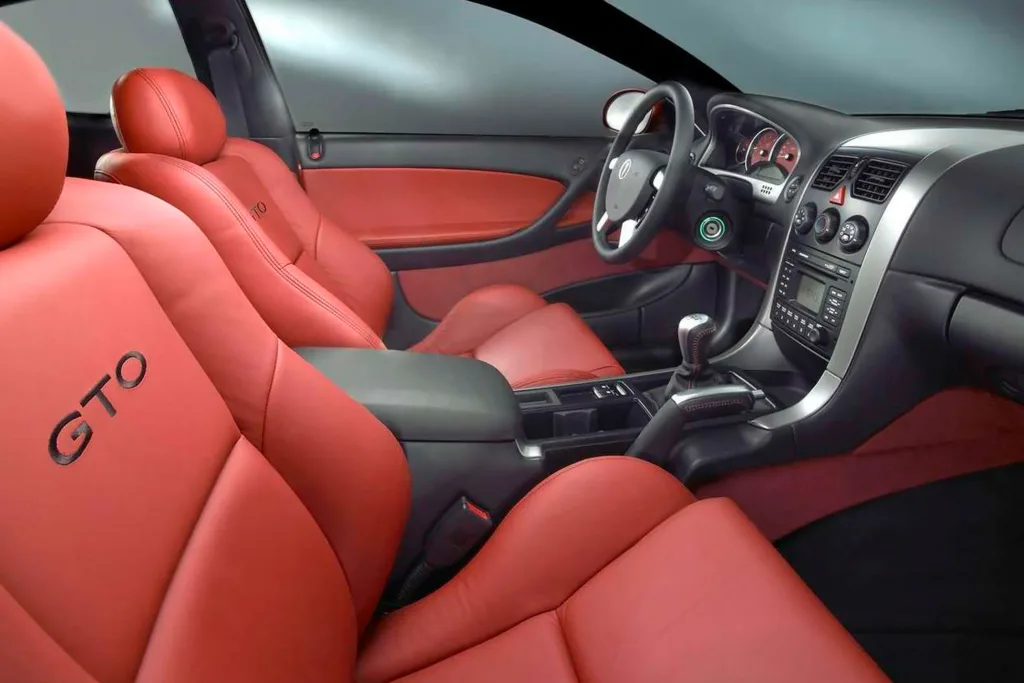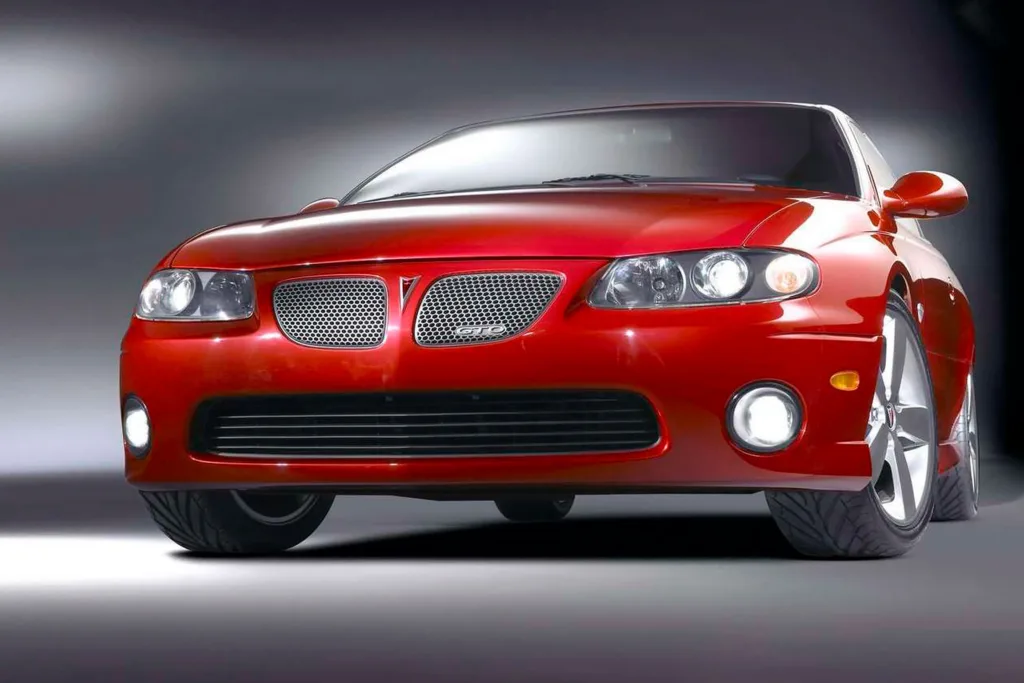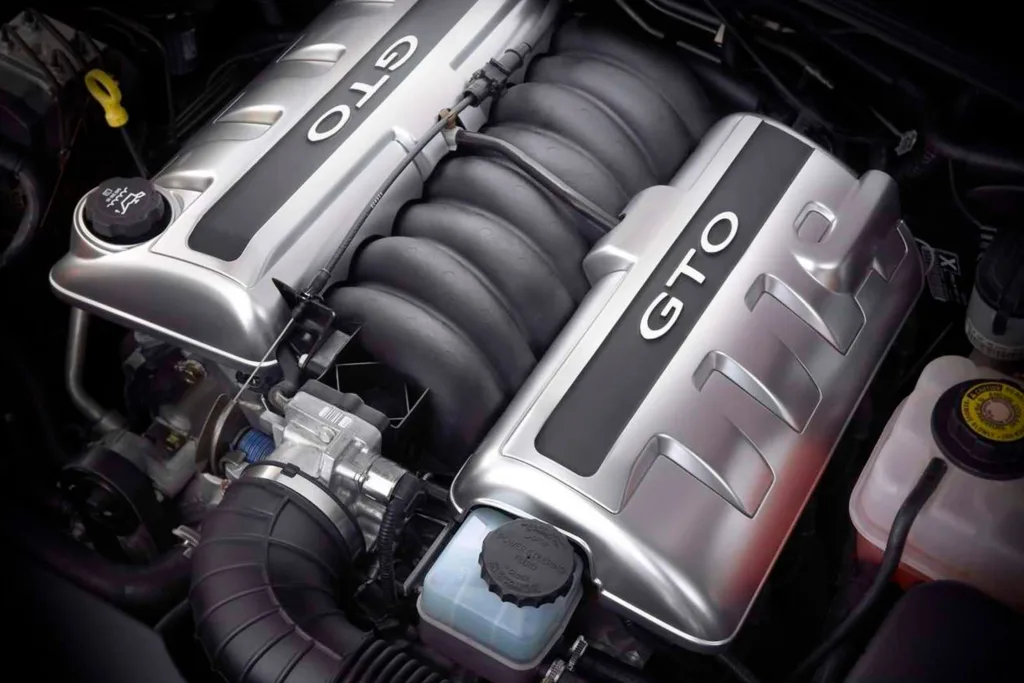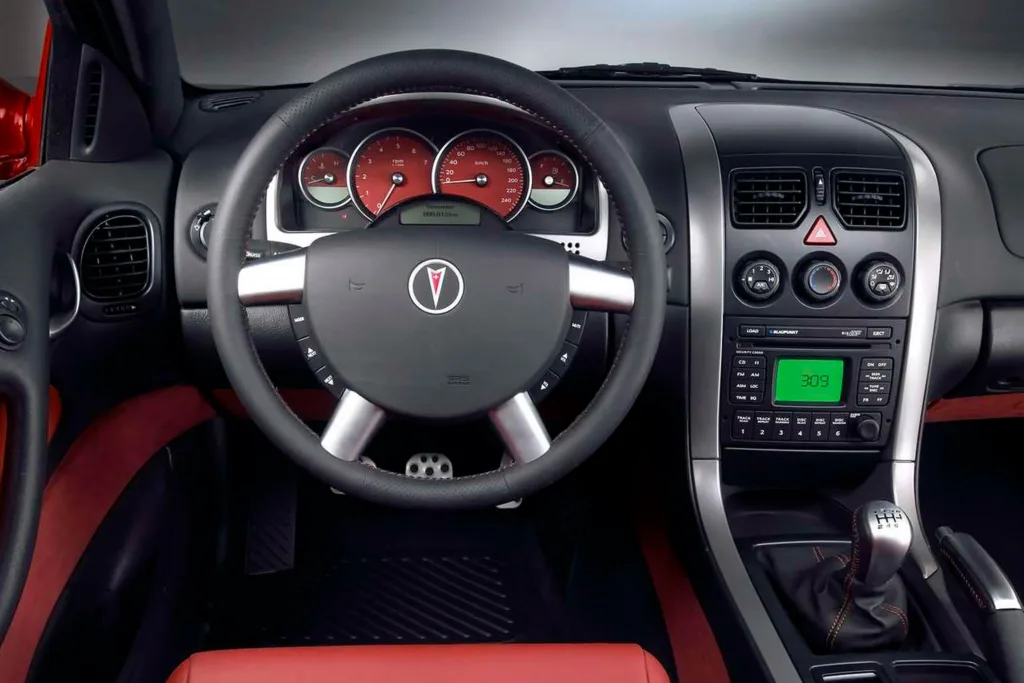By the early 2000s, muscle car enthusiasts faced an uncertain future. With both the Chevrolet Camaro and Pontiac Firebird discontinued after the 2002 model year, it seemed like the era of rear-wheel-drive V8 performance cars from General Motors had come to an end. Yet, rather than closing that chapter, GM was setting the stage for a new one. Using its global reach and engineering resources, the company sought to reignite Pontiac’s iconic spirit. The result was a surprising yet inspired revival of the Pontiac GTO—a nameplate synonymous with the birth of American muscle.

A Modern Classic Born from an Australian Heart
The story of the 2004 Pontiac GTO begins more than 9,000 miles away from Detroit, in Australia. GM’s subsidiary Holden, known for producing performance models tailored to the Australian market, already had an exceptional platform: the Holden Monaro CV8. Built on the company’s V platform (derived from the Sigma chassis architecture later adopted by Cadillac), the Monaro offered a near-perfect foundation—rear-wheel drive, muscular proportions, and balanced handling refined for global distribution.

Recognizing this, GM adapted the Monaro for the U.S. and assigned it the legendary GTO badge, reviving one of Pontiac’s most cherished names from the golden age of muscle cars. While the idea was rooted in nostalgia, its execution was all modern—emphasizing structural refinement, chassis tuning, and real-world usability.

Design: Sophisticated Muscle
Unlike its 1960s predecessor with hood scoops and aggressive badging, the 2004 GTO took a subtler approach. It abandoned flamboyant styling for a clean, European-inspired design—an aerodynamic coupe body that blended curves with taut lines. At 4,890 mm long and 1,840 mm wide, it was larger than most sport coupes of its time, but precise proportions gave it an understated athletic stance.

Aerodynamic efficiency was a priority. The smooth nose, restrained character lines, and body-colored bumpers emphasized modern refinement, while subtle details like dual exhaust outlets and distinctive 17-inch alloy wheels reminded drivers this was still a performance car. Inside, the GTO delivered comfort and quality far exceeding the old-school muscle template—it felt more GT car than street brawler.

Powertrain and Performance
At the core of the reborn Pontiac GTO was one of the most revered small-block engines in modern GM history—the LS1 V8, previously used in the C5 Corvette. This 5.7-liter all-aluminum OHV engine featured a pushrod valvetrain and advanced engine management tuned specifically for the GTO’s balance of performance and refinement.

Output was rated at 350 horsepower (260 kW) and 365 lb·ft (495 Nm) of torque, sent to the rear wheels through either a 4-speed automatic (4L60-E) or 6-speed Tremec manual transmission. Despite its relatively soft launch compared to the Firebird Trans Am it replaced, the GTO delivered blistering acceleration. Independent tests recorded 0–60 mph in just 5.0 seconds and a quarter-mile time of 13.8 seconds at 104 mph. Top speed was an impressive 160 mph (257 km/h).

More than mere straight-line pace, the GTO offered carefully tuned handling manners. Its independent rear suspension, MacPherson strut front setup, and a near 55/45 weight distribution made it far more agile than the classic American muscle cars from which it drew inspiration. The steering was hydraulically assisted and sharply responsive, giving the GTO European-style composure through challenging corners.

Chassis and Ride Engineering
Underpinning the GTO’s dynamic personality was Holden’s high-strength steel monocoque chassis, praised for stiffness and adaptability. Complementing this structure were upgraded dampers, anti-roll bars, and revised spring rates optimized for both control and ride comfort. The result was a firm yet forgiving ride that balanced long-distance cruising with backroad precision.

Stopping power came from large ventilated disc brakes at all four corners—12-inch rotors in front, 11.6-inch rotors in the rear—paired with dual-piston calipers and ABS as standard. These components worked seamlessly with traction control to manage the V8’s power when conditions turned demanding.

Throughout testing, journalists noted the car’s ability to combine enthusiast performance with refinement typically seen only in high-end imports. The suspension tuning and drivetrain synergy achieved the kind of balance typical of BMW’s M3, earning the GTO respect from unexpected quarters.

Interior: Modern Refinement Meets Muscle Tradition
Inside, the 2004 GTO delivered a cockpit that prioritized driver comfort and modern ergonomics over nostalgia. The leather-clad bucket seats—complete with racing-style bolstering—offered exceptional support, while brushed metallic accents and a clean instrument layout gave the cabin a premium European tone.

The double-pod gauge cluster, embossed GTO insignia, and well-padded materials gave the car a far more upscale ambience compared to the plastic-heavy interiors of earlier Pontiacs. The rear seats were genuinely usable thanks to the long wheelbase, making the GTO one of the few high-performance coupes capable of carrying four adults comfortably.

Standard equipment included dual-zone climate control, power accessories, a 200-watt Blaupunkt sound system, and optional 6-CD changer—modern conveniences that reflected the car’s dual mission as both performance coupe and grand tourer.

Reception and Motorsport Appeal
While the styling received mixed reactions for being too subdued, performance critics lauded the GTO’s capabilities. It combined the raw power of Detroit muscle with the driving precision of European coupes—a rare accomplishment in 2004’s automotive landscape. In drifting competitions and tuning circles, the GTO quickly earned credibility. Its rear-drive platform, robust LS-series engine, and strong aftermarket support made it an excellent base for performance builds, including entries in Formula Drift and grassroots motorsport events.
Enthusiasts also appreciated the car’s heritage connection: though reborn abroad, the GTO still captured the soul of what made the original 1960s version great—muscular performance and everyday drivability.
The Beginning of the End—And a Strong Legacy
Production of the GTO continued through 2006, with a switch to the more powerful 6.0-liter LS2 engine delivering 400 horsepower, marking the model’s final evolution. Despite its strong engineering foundation, limited marketing and an understated design hindered its sales in North America. Nonetheless, it remains a cult favorite among collectors and LS enthusiasts today.

The 2004 Pontiac GTO 5.7 Coupe stands as a remarkable hybrid creation: Aussie muscle wearing an American badge, engineered with the refinement of a grand tourer and the heart of a true rear-wheel-drive sports car. In many ways, it represented the rebirth—and swan song—of the original American muscle spirit before Pontiac itself faded from the GM portfolio.




